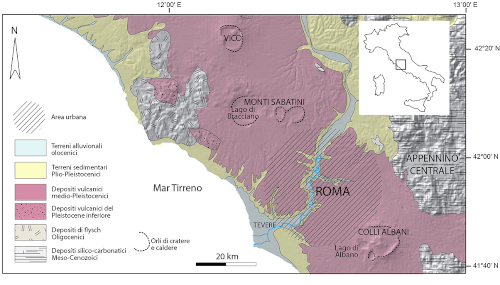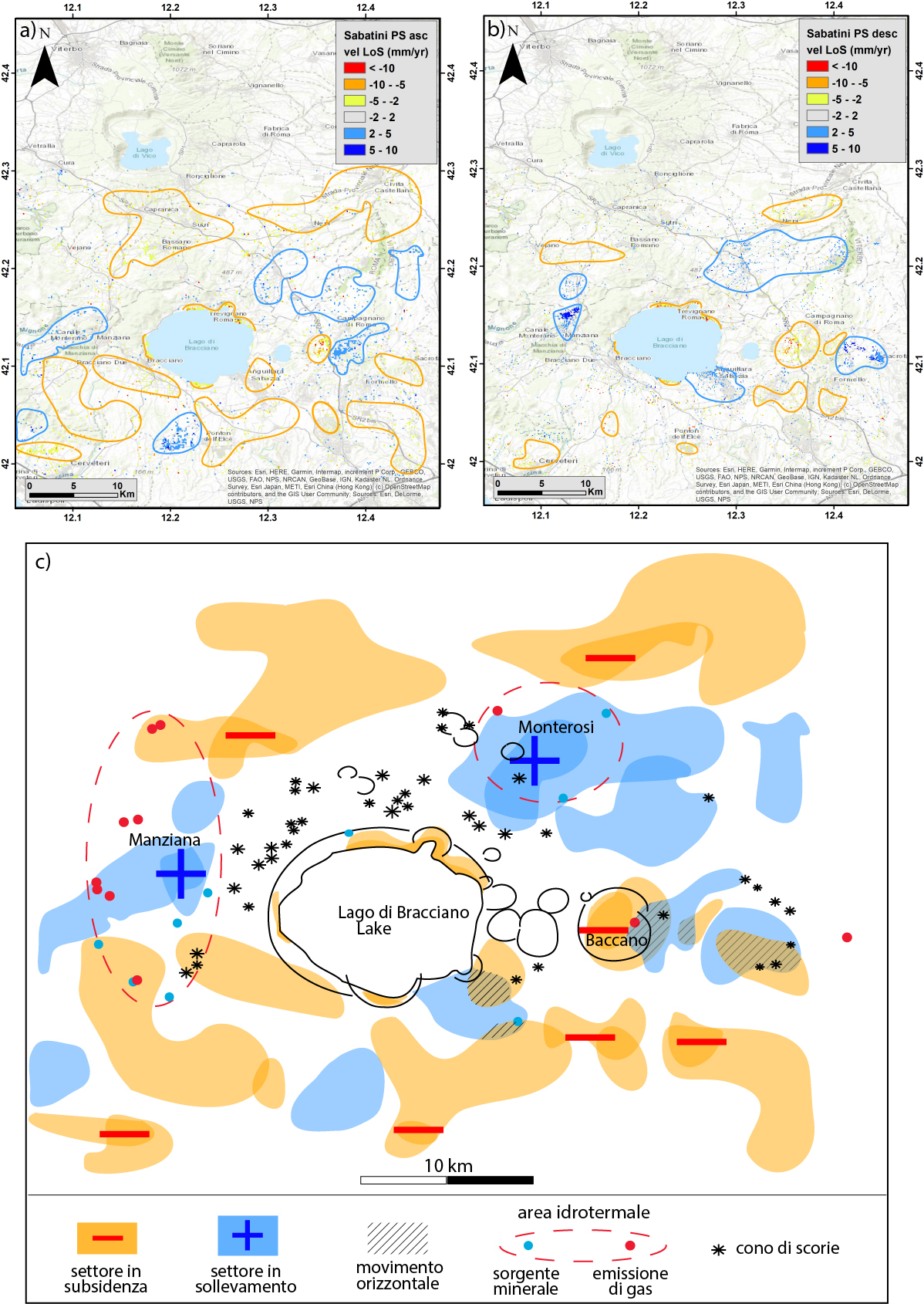The story of the 'sleeping twins' sees a new chapter in the studies of an international team of researchers coordinated by the National Institute of Geophysics and Volcanology
The state of activity of the volcanic district of Monti Sabatini, located NW of the city of Rome, is the subject of the study "Monti Sabatini and Colli Albani: the dormant twin volcanoes at the gates of Rome" just published in the journal Scientific Reports of Nature and the result of collaboration between scientists from the National Institute of Geophysics and Volcanology (INGV), the Sapienza University of Rome and the Geochronology Laboratory of Wisconsin University.
The scientists fielded a multidisciplinary approach through the use of three different investigation methodologies: remote sensing for ground deformations, 40Ar/39Ar dating for the eruptive history, and analysis of the historical seismicity of the volcanic region. In this way it was possible to compare the volcanic-tectonic characteristics of the Sabatino district with those recently studied in the Colli Albani area.
The results of this study show that the Sabatini Mountains had an eruptive history very similar and contemporary to that of the Colli Albani, even if with different average recurrence times, so much so that they can be considered two "sleeping twins at the gates of Rome".
A key current difference, however, resulted from the analysis of ground deformation and local seismicity. In fact, while the Sabatini Mountains show a state of almost absolute stillness, in the Albani Hills there is local uplift and widespread seismicity and degassing.
Furthermore, from the analysis of historical times it emerges that the time currently elapsed since the last eruption of Monti Sabatini is approximately 70.000 years, fully falling within the assessments of the average periods of quiescence between the three major eruptive phases that occurred in the last 600.000 years.
"Monti Sabatini, like the Colli Albani, cannot be considered extinct volcanoes", underlines Fabrizio Marra, INGV researcher and author of the research. "However, both volcanic districts are in a state that we can define as 'dormant', in a sleep that is deep and peaceful for the Sabatini Mountains and restless for the Albani Hills", continues the researcher. "In any case, both volcanic districts in Lazio will offer adequate time periods of precursory signals before their eventual resumption of volcanic activity", concludes Fabrizio Marra.


Abstract
This multi-disciplinary work provides an updated assessment of possible future eruptive scenarios for the city of Rome. Seven new 40Ar/39Ar ages from selected products of the Monti Sabatini and Vulsini volcanic districts, along with a compilation of all the literature ages on the Colli Albani and Vico products, are used to reconstruct and compare the eruptive histories of the Monti Sabatini and Colli Albani over the last 900 ka, in order to define their present state of activity. Petrographic analyzes of the dated units characterizes the crystal cargo, and Advanced-InSAR analysis highlights active deformation in the MS. We also review the historical and instrumental seismicity affecting this region. Based on the chronology of the most recent phases and the time elapsed between the last eruptions, we conclude that the waning/extinguishment of eruptive activity shifted progressively from NW to SE, from northern Latium toward the Neapolitan area, crossing the city of Rome. Although Monti Sabatini is unaffected by the unrest indicators presently occurring at the Colli Albani, it should be regarded as a dormant volcanic district, as the time of 70 kyr elapsed since the last eruption is of the same order of the longest dormancies occurred in the past .




